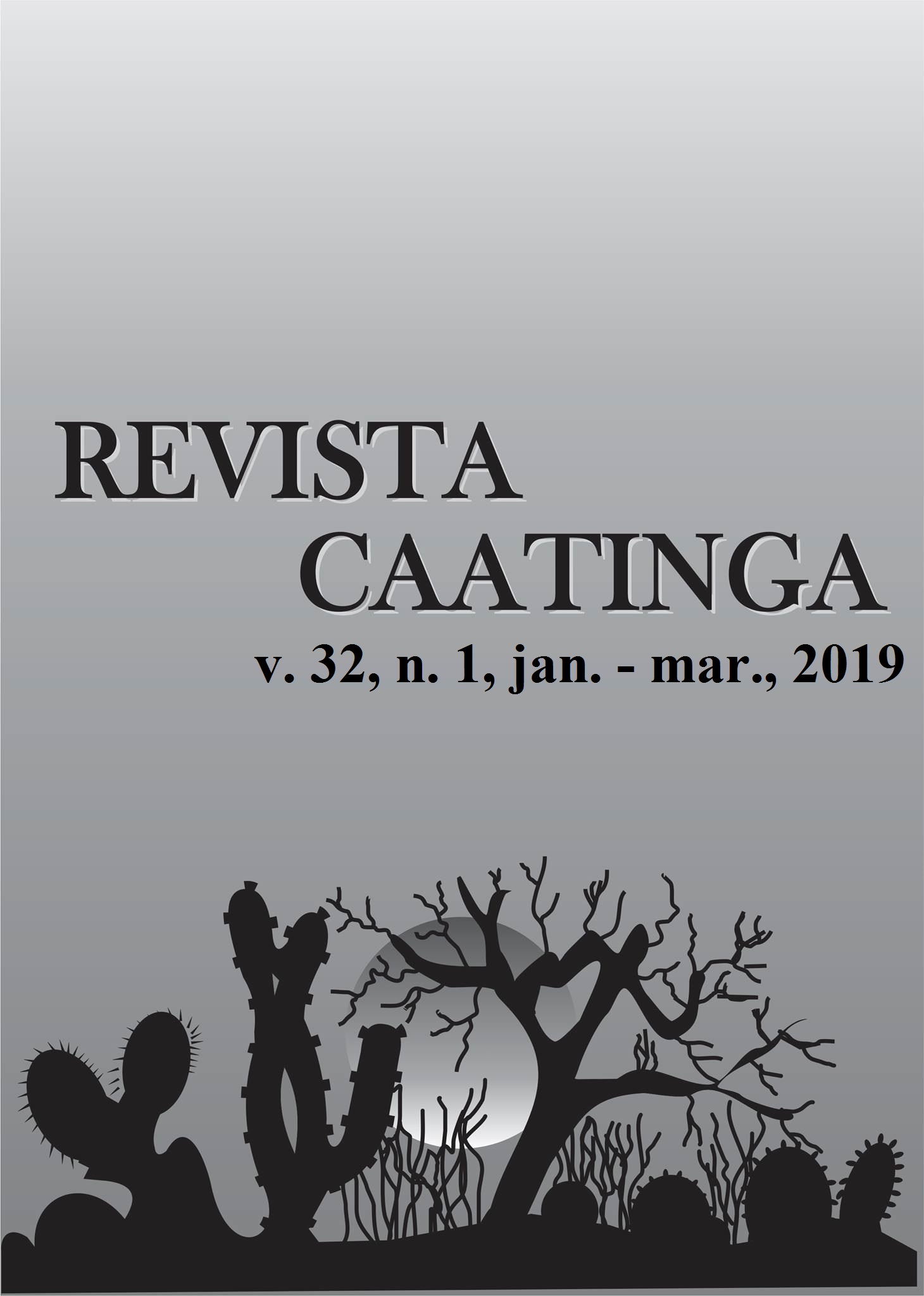NITROGEN AND ORGANIC FERTILIZATION ON GRAPEVINE PRODUCTIVITY IN THE BRAZILIAN SEMIARID REGION
DOI:
https://doi.org/10.1590/1983-21252019v32n113rcKeywords:
Vitis labrusca L. Bovine manure. Mineral fertilizer. Isabel-Precoce.Abstract
Nitrogen fertilization is a limiting factor for grapevine production; its excess or deficiency can cause changes in fruit quantity and quality. Thus, the objective of this work was to evaluate productive parameters of grapevines of the Isabel-Precoce cultivar subjected to nitrogen and organic fertilization in the western semiarid region of the state of Rio Grande do Norte (RN), Brazil. The experiment was conducted at the Experimental Farm of the Federal Rural University of the Semi-Arid Region, in Mossoró, RN, Brazil, during two production cycles. The soil of the area used was classified as dystrophic Red Argissolo (Udult) of sandy texture. The experiment was conducted in a randomized block design with six replications, using a 5×2 factorial arrangement, with 5 nitrogen fertilizer rates (0, 30, 60, 90, and 120 kg ha-1) and two organic fertilizer rates (0, and 20 m3 ha-1 of bovine manure). The production components number of bunches per plant, grape production per plant, grape yield, weight, length and width of bunches, number of berries per bunch, and ten-berry weight were evaluated. The nitrogen rates and organic fertilizer rates used were significant (p≤0.05) for all evaluated components. The N rate of 60 kg ha-1 combined with the organic fertilization generated the best results for the analyzed variables. N rates from 60 to 120 kg ha-1, applied singly or combined with organic fertilizer, hindered the production components of the Isabel-Precoce grapevines.
Downloads
Downloads
Published
Issue
Section
License
Os Autores que publicam na Revista Caatinga concordam com os seguintes termos:
a) Os Autores mantêm os direitos autorais e concedem à revista o direito de primeira publicação, com o trabalho simultaneamente licenciado sob a Licença Creative Commons do tipo atribuição CC-BY, para todo o conteúdo do periódico, exceto onde estiver identificado, que permite o compartilhamento do trabalho com reconhecimento da autoria e publicação inicial nesta revista, sem fins comerciais.
b) Os Autores têm autorização para distribuição não-exclusiva da versão do trabalho publicada nesta revista (ex.: publicar em repositório institucional ou como capítulo de livro), com reconhecimento de autoria e publicação inicial nesta revista.
c) Os Autores têm permissão e são estimulados a publicar e distribuir seu trabalho online (ex.: em repositórios institucionais ou na sua página pessoal) a qualquer ponto antes ou durante o processo editorial, já que isso pode gerar alterações produtivas, bem como aumentar o impacto e a citação do trabalho publicado (Veja O Efeito do Acesso Livre).







